
I love making plans for my garden—but not on paper. My most rewarding design efforts take place as I’m daydreaming. I gaze about the garden and imagine what I’d like to see. I think about the lines of its paths and beds, the interplay of plants, and the juxtaposition of shapes, textures, and colors. Hours of such seeming inactivity suddenly yield fruit—an “Aha!” moment that opens the sluice gates of my creativity. Now I know the perfect spot for that new ‘Sky Pencil’ holly. It’ll look great rising alongside the red dome of a Japanese maple.
Though my approach to design may seem unorthodox, I suspect it’s shared by many. I view garden making as an evolving process rather than as the pursuit of a fixed idea (aka a plan on paper). My fluid, ongoing method is as flexible as it gets. I simply remember that nothing need be permanent and that it’s interesting and usually easy to change things. I’m often not quite sure where my efforts are leading, and I don’t really care. I’m trying new plants and new ideas, and I’m having fun. I’m open to changing conditions, flashes of inspiration, and sudden whims. Every garden-design problem has many solutions, and exploring the possibilities excites me. I keep refining my vision of my garden, and its beds and borders look better every season.
On the whole, I’m not worried about making mistakes. That’s because, as a friend once pointed out, making a mistake just gives me the chance to do a little more gardening. Nonetheless, there are several techniques I use to support and hone my intuitive design process.
1. Play with shapes before making them permanent
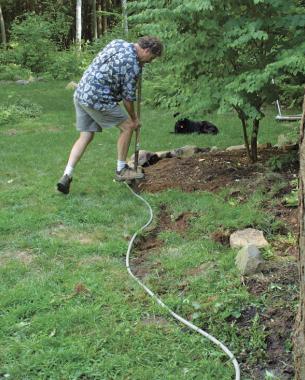
Before laying out a new bed within a lawn area, I start playing with its shape. Each time I mow the lawn, I’ll leave the site for the potential bed unmown. Then I can tweak its rough outlines by simply altering the path of the mower. Once I have a rough approximation that I like, I further refine its perimeter lines using a garden hose or rope to outline the bed. When using a hose, I let the sun warm it so that it’s soft and pliable.
A variation on this technique works for siting paths as well. Again, within a lawn area, I let the grass get a little long. Then, in subsequent mowings, I use the mower to create paths of varying shapes and widths so that I get a good idea of what will make a pleasing pattern. Where there’s no lawn to mow, I define the edges of paths by using a garden hose, stakes, or slender trunks or branches of fallen trees lined along the ground.
Use visual aids
2. Use annuals as stand-ins
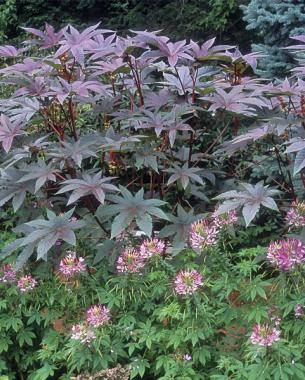
A good way to preview long-term projects is to use stand-ins. If I’m thinking of planting a hedge or making a divider in the garden, I plant a row of fast-growing annual castor beans ( Ricinus communis and cvs.), which rapidly create a dense wall of foliage at least 5 feet tall. This helps me visualize how a hedge will look. I use the same technique to get a feel for how a tree or large shrub might look in a given spot. For example, I used a castor bean plant as a preview before planting an empress tree ( Paulownia tomentosa , USDA Hardiness Zones 5–8).
3. Ask your friends to act as shrubs
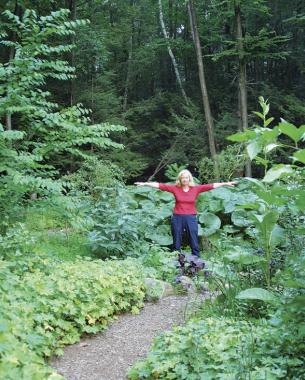
Pieces of lumber and a few garden tools are also useful to visualize effects or to calculate spacing. I might jab a pitchfork or shovel in an evolving part of the garden to get a rough sense of the relative size and proximity of trees and shrubs. Sometimes I press friends into service and have them hold a piece of 2×4 lumber in place or just stand with their arms outspread as I evaluate the placement from different vantage points.
4. Don’t hesitate to move woody plants
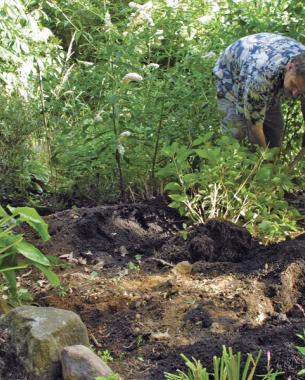
Woody plants are not immune to my passion for plant shuffling. Since I’m often uncertain about how to use a plant that’s new to me or my garden, I regularly end up moving woodies at least once before I find them a good home. I moved a Japanese maple ( Acer palmatum var. dissectum , Zones 5–8) a few times before settling on a spot at the head of a long, narrow bed. There, its burgundy dome provides a soft, smooth entry point for the eye. It looks even better backed by the narrow spire of a ‘Sky Pencil’ holly ( Ilex crenata ‘Sky Pencil’, Zones 5–7), which also lived at several addresses before taking up its present residence.
Take an interactive approach
5. Don’t be afraid to prune
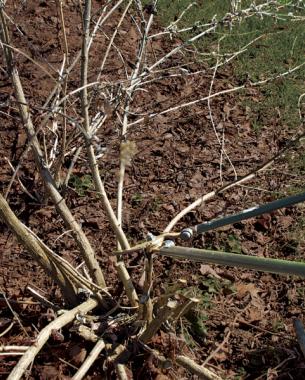
I simply cut some trees down to size. Seven-son flower ( Heptacodium miconioides , Zones 6–9) is often the subject of rave reviews, so I had to try one. It grew rapidly and filled its allotted space quickly. Despite its great fall flowers, however, I found the plant rangy and chaotic looking. So I cut it to the ground so that it would come back as a lower, denser shrub. I’ll continue to coppice it from now on. Coppicing enables me to grow other trees that would otherwise be too big for their intended place; the list includes smoke bushes ( Cotinus spp. and cvs., Zones 4–8), golden-leaved catalpa ( Catalpa bignonioides ‘Aurea’, Zones 5–9), elderberries ( Sambucus spp. and cvs., Zones 3–9), several willows ( Salix spp. and cvs., Zones 4–9), empress tree, and large hydrangeas ( Hydrangea paniculata and cvs., Zones 4–8, and H. macrophylla and cvs., Zones 6–9).
6. If something works, do more of it
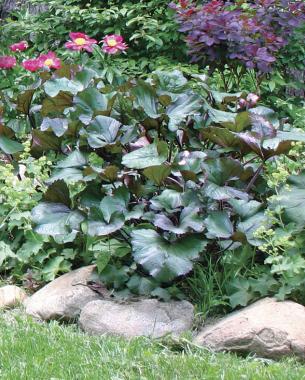
I’m always trying plants, whether they’re hot new introductions or pass-along plants from gardening friends. I plant them in several places and in different combinations to see how they perform. During this phase, I do a lot of moving and dividing. Those that take off are then planted in abundance. I take special delight in finding and using plants that perform against type, as it frees me to make unexpected combinations. I like Hosta ‘Royal Standard’ (Zones 3–8) not just because it’s fragrant; I was pleased to discover that, unlike most hostas, it also thrives in full sun. And I’ve got a planting of golden groundsel (Ligularia dentata ‘Othello’, Zones 4–8) in a spot that’s theoretically too sunny for this lover of shade and moisture. It happily self-sowed nearby, so I took the hint and planted more.
Annuals sometimes yield surprises, too. I’m keen on large-leaved plants for full sun. They’re invaluable for adding hefty substance to sunny borders, which often look a little fluffy since most sun lovers have small or linear foliage. When I first happened upon cannas (Canna spp. and cvs., Zones 8–11), I planted a few of them at intervals along the borders. I was so taken by their bold effect that my passion for plants took a sudden sharp turn toward the tropics. Thanks to that chance purchase, I now grow all kinds of large architectural annuals for the punchy sense of structure they provide.
7. Look for happy accidents
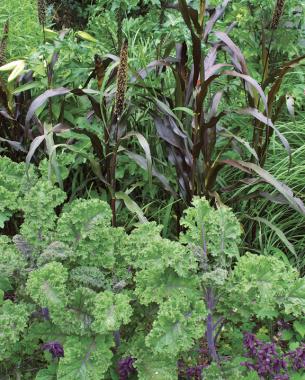
While consolidating a bunch of plants in a nursery area near my garden, I discovered that my seed-grown kale and a six-pack of an annual sage made great textural counterpoints and shared a similar color. I quickly made plans to plant a whole drift, backed by a sprawl of ornamental purple millet ( Pennisetum glaucum ‘Purple Majesty’).
Make the most of serendipity
8. Take advantage of windfalls
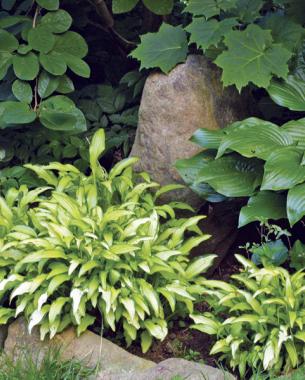
I’ve dug up countless rocks in the making of my garden. Early on, I used them as edging for my raised beds since it was easier than carting the stuff away. Now I edge all my beds with fieldstone. The rock serves as a unifying element and adds to the sense of place I’ve tried to create. When I unearth a boulder with a particularly interesting shape or color, I turn it into an impromptu ornament, like a miniature standing stone
9. Take a new plant on a tour of your garden before deciding on a home
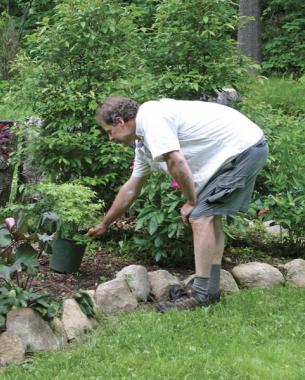
I’m always open to windfalls and whims: pass-along plants, plants from some can’t-pass-it-up sale, or plants accorded “latest and greatest” status by preeminent plantspeople, which makes them instant must-haves in my book. One day, I snatched up a golden meadowsweet (Filipendula ulmaria ‘Aurea’, Zones 3–9) when I found it on sale. I brought it home and promptly started the plant dance—cha-cha-chaing around the garden, new plant in hand, trying to find it just the right spot.
I don’t always find new plants a home right away. So I keep a nursery area that is usually well stocked with seedlings, divisions, and other new plants. After all, it’s nice to have a few plants at the ready—another design inspiration might strike me at any moment.


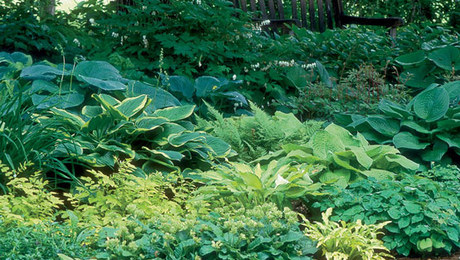
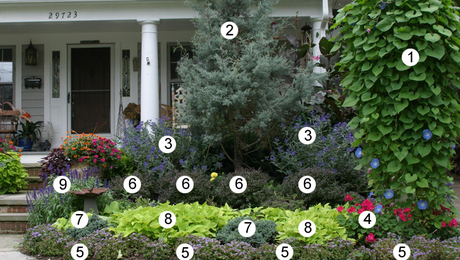
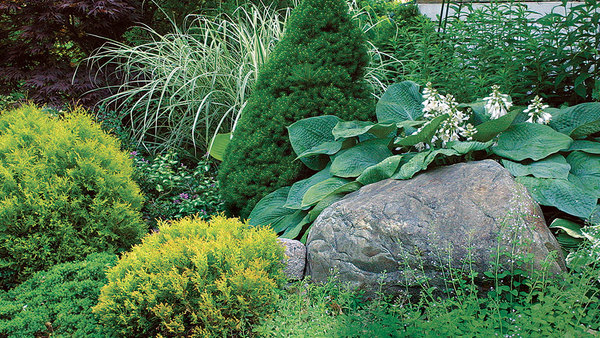












Comments
Log in or create an account to post a comment.
Sign up Log in